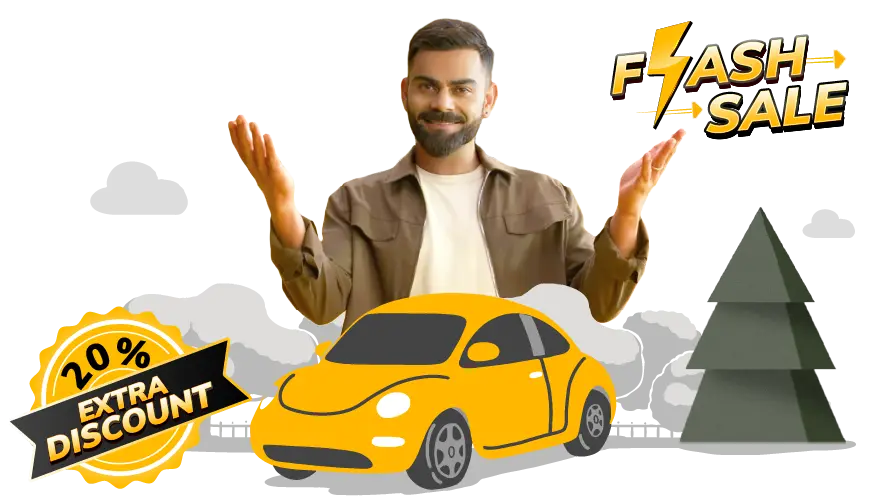9000+ Cashless Garages
96% Claims Settled (FY 24-25)

9000+ Cashless Garages
96% Claims Settled (FY 24-25)



Fuel injection systems are the most important element in efficiently delivering fuel to your car's engine. The two most popular types of fuel injection system are direct injection and multi-point fuel injection system. The engines have entirely different workings and, as a result, different preferences. Direct injection technology injects the fuel directly into the combustion chamber for greater power.
Meanwhile, multiport injection technology injects fuel into the intake manifold for improved performance. In this article, we will broaden your horizon about the functional differences between multi-point injection and direct injection so you can better choose an informed car.


MPFI systems spray fuel near the intake valve in the intake manifold. This helps bring the air-fuel mix to a more uniform quality before it enters the combustion chamber. MPFI is known for being reliable and simple. Fuel in this is delivered equally, which makes the engine run smoother for longer periods.
Many economical and mid-range vehicles implement MPFI systems because they prove to be cost-effective and easy to service. MPFI systems are widely used because, although they don't match direct injection in terms of fuel savings, they balance performance and cost. Therefore, they are cost-effective.
Direct Injection, also known as Gasoline Direct Injection (GDI) systems, injects fuel directly into the combustion chamber at high pressure. Precise fuel injection enables an engine to deliver more power and less pollution. DI systems are, therefore, developed to improve control over air-fuel mixing and performance in varied conditions.
They're mainly fitted in modern engines, especially high-performance engines. Such engines tend to respond more aggressively to the throttle and produce superior torque. However, their implementation requires advanced engineering. Consequently, they cost more to manufacture and maintain.
Both direct injection and MPFI systems perform best in certain areas, making each suitable for specific applications. Here's a detailed comparison:
MPFI systems have outstanding performance in terms of consistency and reliability, but it has a few demerits also. Key pros and cons of MPFI are:
Direct Injection systems provide several benefits that enhance engine performance and efficiency. However, despite the benefits of the Direct Injection system, several drawbacks exist. The following are the pros and cons of DI:
The comparison of the DI and MPFI's fuel economy enables us to make an informed decision. Here is a comparison table of DI and MPFI:
Proper maintenance is the key to long lives and dependable operation of Direct Injection and MPFI systems. Every system has its own different needs, which are given below:
Understanding the environmental impact caused by direct injection and MPFI can enable us to choose a better engine with less impact. Thus contributing to a sustainable environment. Here are the environmental effects of Direct Injection and MPFI:
There are numerous applications of Direct Injection and MPFI in modern vehicles. Knowing them helps you choose a system that suits your needs and requirements. Here are some of the applications listed below to help you with your decision:
Knowing the application of the Direct Injection systems can help us make a firm decision when we buy a car. Here are some of the applications of Direct Injection systems:
The MPFI is applied widely in low-budget cars. Knowing their usage helps us to make a wise decision regarding your vehicle. Here are a few applications of the MPFI system:
Choosing between Direct Injection and MPFI systems depends upon the driver's and his pocket's needs. But here's a list of points that enable you to make the right choice:
Direct injection provides a more fuel-efficient driving experience. It delivers fuel directly to the combustion chamber with exacting precision, improving its efficiency, especially at higher speeds or heavy loads. In the case of MPFI, it is effective.
Direct Injection systems provide more power and allow better regulation of the air-fuel mixture. This makes DI systems ideal for sports cars and luxury models based on performance. MPFI still provides a reliable power source but tends to offer less performance.
Direct Injection systems use high-tech ECUs and sensors to optimise the air-fuel mixture, improving engine efficiency and performance. MPFI uses electronic controls but is less sophisticated than DI. It relies on relatively simple systems that ensure reliability.
MPFI has a more straightforward design, so it is cheaper to build and maintain. Thus, its use caters more to the masses, seeking cost-effective solutions. Direct injection costs a lot upfront and requires expensive upkeep later on.
MPFI systems are easy to design. They last longer and perform better over time. Direct Injection needs regular maintenance. Its fuel system is complex and high-pressure. In this case, MPFI is preferred more for the people who make the vehicle as an investment.